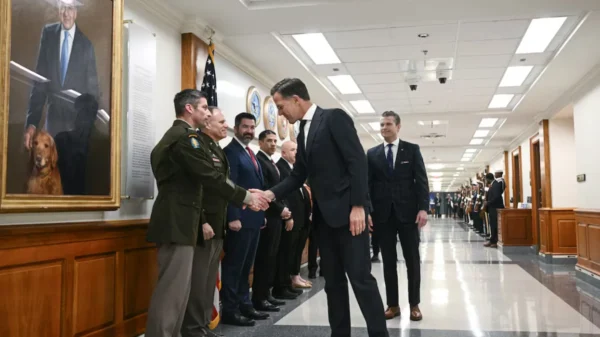President Donald Trump has unveiled his proposed $892.6 billion defense budget for fiscal year 2026, signaling a strategic shift in U.S. military priorities. The budget emphasizes advanced missiles, drones, and troop pay raises while cutting back on traditional platforms like the F-35 fighter jets and reducing Navy personnel. This plan reflects Trump’s focus on modernizing the military with high-tech, cost-effective weaponry amid ongoing global security challenges.
A Focus on High-Tech Missiles and Drones
The 2026 budget request underscores a pivot toward investing in advanced missile systems and unmanned aerial vehicles. The Air Force will continue to prioritize the Joint Air-to-Surface Standoff Missile – Extended Range (JASSM-ER) and the Long Range Anti-Ship Missile (LRASM), both designed to extend the U.S. military’s reach, particularly in the Indo-Pacific theater.
Lessons from recent conflicts, especially the war in Ukraine, have demonstrated the effectiveness of small drones in modern warfare. Reflecting this, the budget boosts spending on small unmanned aircraft systems, recognizing their role as low-cost yet highly effective tools on the battlefield.
“The increasing reliance on drones and precision missiles is a response to evolving threats and the need for flexible, scalable military options,”
said defense analyst Laura Jenkins.
Fewer F-35s and Warships to Save Costs
In contrast to the increased funding for missiles and drones, Trump’s budget requests fewer F-35 fighter jets. The proposal seeks to purchase only 47 F-35s in 2026, down from 68 jets requested in the previous fiscal year under the Biden administration.
The Navy will also reduce its acquisition of new warships, requesting only three new vessels, including Virginia-class submarines. This is part of a broader strategy to retire older, more expensive-to-operate ships and aircraft, streamlining the force structure and cutting operational costs.
The Navy plans to reduce its civilian workforce by 7,286 employees, further trimming expenses and aligning personnel levels with the new force posture.
Troop Pay Raises and Personnel Priorities
The budget includes a 3.8% pay raise for military personnel, the largest increase in recent years, aimed at boosting recruitment and retention amid growing competition for talent.
While cutting back on some hardware, the administration emphasizes support for service members, recognizing that a well-compensated force is essential for maintaining readiness and morale.
Balancing Modernization with Budget Constraints
Trump’s defense budget totals $892.6 billion in base discretionary funding, roughly flat compared to the previous year. However, when combined with an additional $150 billion defense package passed by the House, including $25 billion for Trump’s controversial “Golden Dome” missile defense shield, total defense spending could approach $1 trillion.
The Golden Dome project, focused on missile defense through space-based interceptors and sensors, is a signature initiative of the Trump administration, though most of its funding is allocated separately from the base budget.
The budget’s emphasis on retiring legacy platforms and investing in cutting-edge technology reflects a strategic recalibration aimed at deterring Chinese aggression in the Indo-Pacific and revitalizing the U.S. defense industrial base.
Congressional Debate and Industry Impact
The budget proposal has already sparked debate on Capitol Hill. The House Appropriations Committee’s Defense subcommittee has drafted a bill that increases the F-35 purchase to 69 jets—one more than the Biden administration’s previous request—indicating bipartisan support for the program despite Trump’s cuts.
Lockheed Martin, the manufacturer of the F-35 and key missile systems, remains a central player in the Pentagon’s procurement plans. The budget also reduces purchases of the Precision Strike Missile, which is intended to replace the Army Tactical Missile System (ATACMS) used in Ukraine, signaling a shift in Army priorities.
Strategic Implications for U.S. Military Posture
The focus on missiles and drones aligns with a broader strategy to counter near-peer competitors like China and Russia. Extended-range missiles enhance the U.S. military’s ability to project power across vast distances, while drones offer flexible, cost-effective options for surveillance and strike missions.
Retiring older ships and aircraft reduces maintenance burdens and allows the military to concentrate resources on next-generation capabilities.
“This budget reflects a recognition that future conflicts will be fought differently, with an emphasis on precision, speed, and unmanned systems,”
noted retired General Michael Anders.
President Trump’s 2026 defense budget request marks a significant shift toward modernizing the U.S. military with advanced missiles and drones while scaling back on traditional platforms like the F-35 and Navy warships. The plan balances fiscal constraints with strategic priorities, aiming to maintain U.S. military superiority in a rapidly evolving global security environment.
As Congress reviews the proposal, debates over procurement levels and funding allocations will shape the Pentagon’s capabilities for years to come.





































